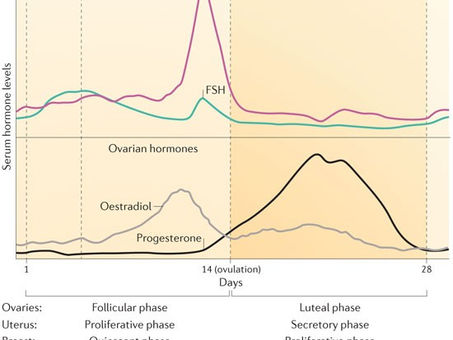top of page
Search


Unmasking Visceral Fat: The Hidden Dumpster Fire Inside Your Body
Populations adapted by developing energy-conserving physiology — efficient fat storage, early insulin resistance (to prioritise glucose for the brain), and lower lean muscle mass.
But when this “thrifty” biology meets modern abundance — high-refined-carb diets, low physical activity — the same traits become maladaptive:→ less muscle mass, less subcutaneous storage, more spillover into visceral depots.

S A
Nov 1013 min read


Unlocking the Power of Peptides: From Amino Acids to Muscle Growth, Fat Loss, and Longevity
Peptides aren’t the future — they’re the present. But the real biohack? Mastering your body’s own signaling before you ever touch a vial. Peptides aren't magic—they're biology hacks. Stack smart, test blood work, and pair with whole foods/sleep.

S A
Nov 111 min read


How and Why Seed Oils and Plant Sterols Contribute to Artherosclerosis
At this point, it’s worth asking: if polyunsaturated seed oils and plant sterols disrupt red blood cells, fuel oxidation, promote inflammation, and crystallise in plaques — then why are they still recommended as “cardioprotective”?

S A
Oct 1415 min read


The Demonization of Saturated Fat: A Century of Flawed Science and Policy
The demonization of saturated fat wasn't malice but a cascade: panic-fueled hypothesis, flawed cornerstone study, buried null results, and politicized policy. Vegetable oil industries lobbied (visiting scientists to yank papers), while a small cadre controlled grants and journals, stifling dissent.

S A
Oct 148 min read


The Modern Luteal Burden: Why Women Today Experience 3x More Cycles Than Nature Intended
Progesterone and estrogen repeatedly stimulate breast tissue and the uterine lining. Without the “breaks” of pregnancy and lactation, this repeated turnover is thought to increase the risk of fibroids, endometriosis, and possibly breast and endometrial cancers.

S A
Aug 317 min read


The Hormonal Rhythm of Metabolism: How Your Monthly Cycle Shapes Appetite, Fat-Burning, and Energy
Your hormones aren’t the enemy. They’re the original biohack — refined over millions of years to help you survive and thrive. When you learn to work with their rhythm, you unlock a level of ease and effectiveness that no one-size-fits-all diet can match.

S A
Aug 3113 min read


Pathophysiology of Atherosclerosis: How Heart Disease Really Begins - Part 2
Seed oils rich in linoleic acid (LA), such as soybean, corn, sunflower, safflower, and canola oil, provide the exact substrate (PUFAs) that enzymes like lipoxygenase (LOX) and myeloperoxidase (MPO) use to oxidise LDL particles.

S A
Aug 158 min read


Pathophysiology of Atherosclerosis: How Heart Disease Really Begins - Part 1
What’s actually most prone to oxidation in LDL is the fatty acid tail of the cholesteryl ester in the “oil barrel” (and the PUFA in the phospholipid shell). Cholesterol itself — the rigid steroid ring — is remarkably stable. Pure cholesterol won’t just oxidise easily in the body.

S A
Aug 159 min read


LDL Cholesterol: Friend, Foe, or Misunderstood? Rethinking Heart Disease in the Context of Modern Nutrition
When the metabolic environment is calm — low inflammation, low oxidative stress, good insulin sensitivity — LDL particles circulate, deliver nutrients, and return to the liver without incident. But in an inflamed environment, those same particles can get trapped, oxidised, and turned into plaque.

S A
Aug 817 min read


Saturated Fat, Cholesterol, and Heart Disease: Rethinking the Narrative
The simple claim “saturated fat raises LDL, therefore causes heart attacks” is outdated. A more accurate view must consider biochemistry, particle quality, metabolic health, and dietary context.

S A
Aug 612 min read
bottom of page

